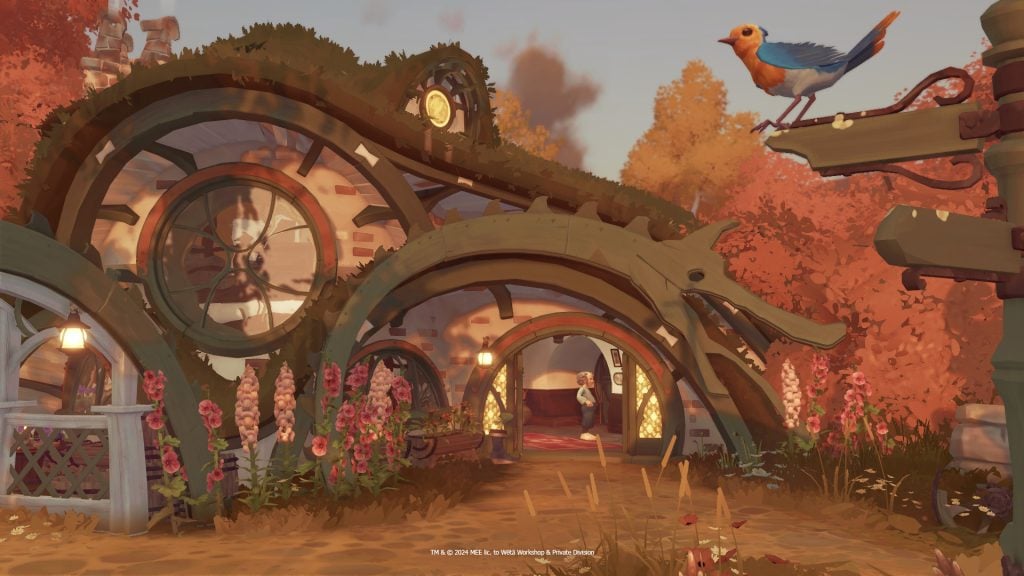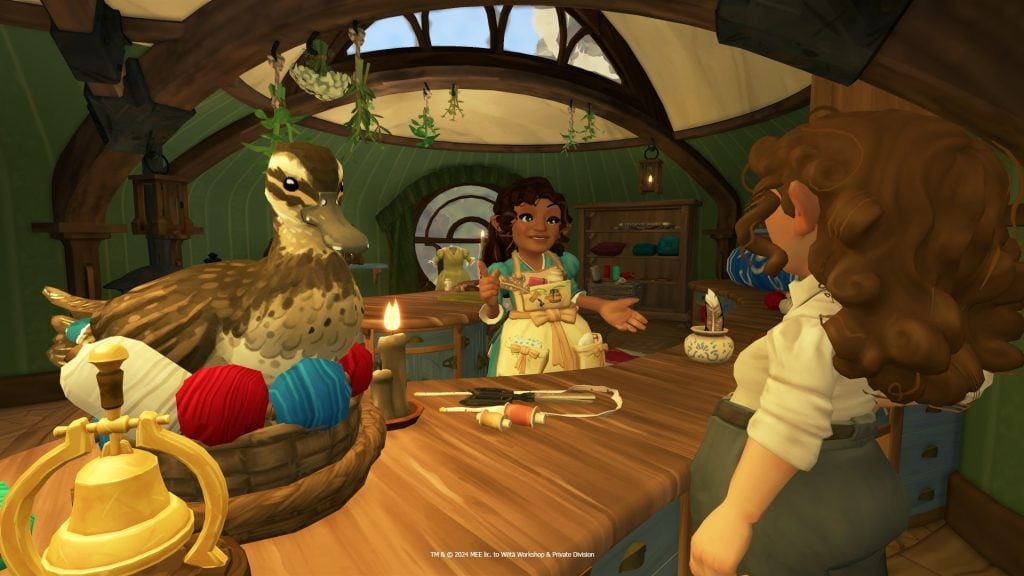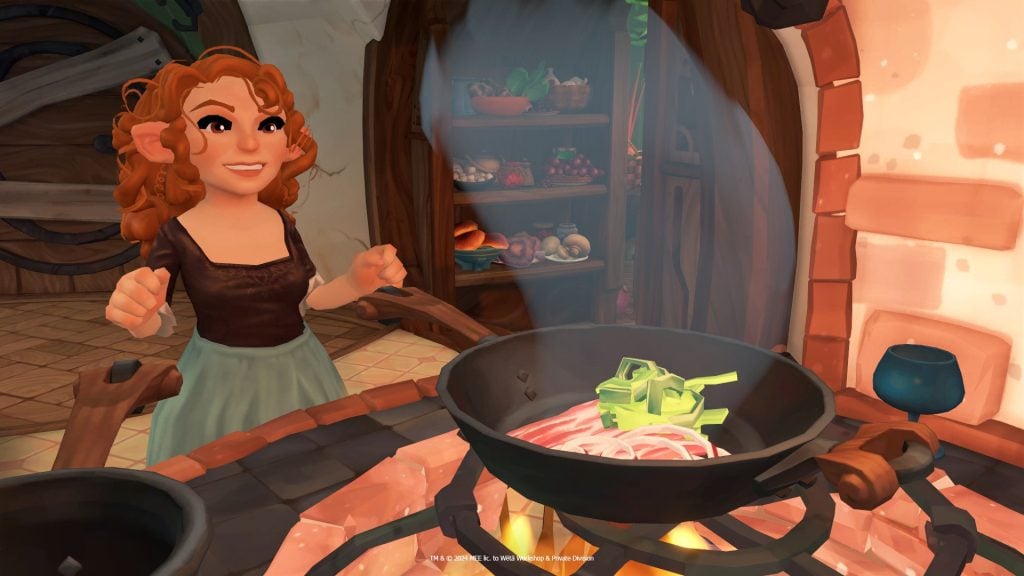Tolkein’s Legendarium has had its ups and downs in the video game realm. Success has been found in the action-adventure space, bringing oliphant-sized battles to life with familiar heroes under your control. On the other end of the spectrum, there’s Gollum, and the less we say about that the better. Thanks to that gangly misstep, Middle-Earth is due for a refresh. What better place to go than where it all began?
Tales of the Shire looks to all things halfling to inform its cozy world. I use that term willingly in this case, as there’s perhaps no fictional locale more associated with coziness and comfort than Hobbit holes. The setup will immediately evoke memories of Harvest Moon and other, similar life sims — you’re a hobbit relocating from the Prancing Pony in Bree to the small village of Bywater. It’s the perfect opportunity to embed yourself in the local community and learn the ins and outs of living underhill.

The brief preview build I played (entirely on PC) is actually the second time I’ve demoed Tales of the Shire. At Summer Game Fest I was able to enjoy a mid-game slice with a member of Wētā Workshop guiding me through and discussing the dedication that’s gone to making this as true to the text as possible. How else can you describe the research into questions like “Did Tolkien ever describe what winter is like in the Shire?” and the fidelity towards creating a world that’s as true to text as can be?
That session was all about me exploring and decorating my new Hobbit-hole, whereas this latest preview gave me a chance to get my own footing as my own named and customized newcomer. Alwynn Whitfoot, with his sleepy eyes behind silver spectacles and fondness for fireside writing, was soon making friends and getting a lay of the land before being drawn into what I imagine would be the equivalent of Animal Crossing: New Horizons’ Project K.
In this case, that’s determining what it takes to have Bywater formally classified as “a village,” something enshrined within a missing book of rules. That sounds like a rich opportunity for world building, but in practice it was a handful of fetch quests and dialogue exchanges stretched across a couple in-game days. As a tutorial it’s fine, granting you a fishing rod and watering can and introducing the game’s cooking (more on that later). As a first impression to form an opinion on the game off of… it’s been done, and done better.

So, why continue on? Because Tales of the Shire’s greatest strength is the natural appeal of its setting. There’s charm in the writing, with familiar surnames and references to broader Middle-Earth finding their way in. Locations like the Great East Road and the Green Dragon can be found along the hustle of an inviting town square. The game has a genius means of getting around without losing your way as well. No matter where you go, birds will flit about and land on signposts to point you in the direction of your marker objective. It’s a nice UI cheat and something I hope the game leans into more for other indicators.
Where things finally livened up was when the game tasked me with inviting a couple of hobbits over for a meal to get to the bottom of where that book was. By this time I’d foraged, fished, and farmed up a decent amount of ingredients and learned a few recipes. It’d be simple enough put a couple plates in front of my guests, but there’s an entire ritual to these group meals that must be adhered to, and all the better for it. For one, an invitation must be sent formally by post from your writing desk to trigger the meal during the next in-game day. Once the sun rises on that you should check your own mailbox for RSVPs and hints for what your guests are craving. This can be as simple as favored dishes, but extends into things like flavors and textures as well.
That’s where cooking comes in, and it’s the element of Tales of the Shire I’m most interested in exploring further. Whenever you start on a dish, you’ll see a small cross-section of “stats” with a sweet spot to get some extra quality in your results. For example, you can choose to only give your onions a few chops to go for a chunkier texture or simmer them more for added tenderness. In the early game I ran into situations where even when I had the right ingredients for a dish I didn’t have the right kitchen tool to “modify” it, or seasonings to enhance them, so I’m excited to see how much I can expand my countertop collection.

The reward for all this prep? A second breakfast for the ages, with some perfectly cooked fishcakes and a few good taters. My guests saw fit to give me some gifts for my effort too, becoming closer friends and teaching new recipes. More than any other collectible or progression based element, it’s the prospect of becoming Bywater’s next top chef that feels like my biggest motivator.
My main concerns at this stage are how sustainable this loop may be. There are plenty of residents to get to know, each with tales (and recipes) to share but the game needs some more embedded long term goals. As this is a more defined world than something like Stardew Valley, I don’t anticipate the opportunity to customize where buildings are or expand my homestead. At the least I hope I can fix my broken and blocked off front door (an odd quirk for the game’s beginning).
Whatever the case, there’s plenty of time to learn more about Tales of the Shire: A The Lord of the Rings Game between now and its March 25th, 2025 release.
Leave a Comment


